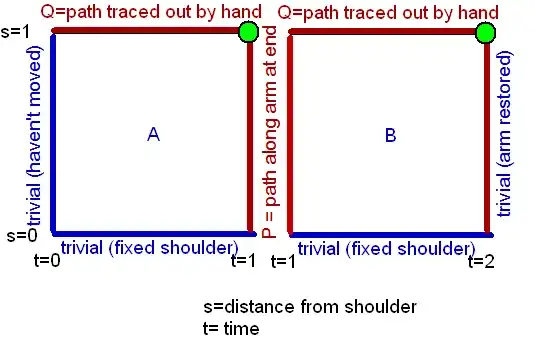I am reasonably familiar with the math behind spinors, the fact that $SU(2)$ is the universal (double) cover of $SO(3)$, etc.
I've often seen the "belt trick" and the "plate trick" used to motivate these results, but I must admit that I've never understood exactly what mathematical fact these tricks are supposed to be demonstrating. Sometimes I've seen the tricks presented as giving evidence for very precise facts like (a) "$SU(2)$ double covers $SO(3)$" or (b) "$SU(2)$ is simply connected but $SO(3)$ is not" or (c) "rotating a spinor by $2\pi$ takes it to its negative". Other times, I've seen the tricks presentated as just giving very hand-wavy motivation for the broad idea that "Sometimes you need to spin things around twice in order to get back to where you started."
Obviously the belt and plate tricks don't rigorously prove any mathematical results, but which precise mathematical facts (such the ones listed above, or others) do the tricks "demonstrate"?
Part of my issue is that people often describe the belt and plate tricks as demonstrating certain results about spinors, but in practice they seem to actually employ the reverse logic. That is, instead of first (a) arguing that belts/plates are described by spinors and then (b) using the belt and plate tricks to demonstrate mathematical results about spinors, in practice people instead tend to first (a) derive mathematical results about spinors, then (b) use the belt and plate tricks to show that real-world belts and plates display similar behavior, and finally (c) hand-wavily conclude that spinors seem to describe real-world belts and plates. This is an interesting observation, but I don't see how it actually demonstrate any mathematical results.
In order to use the tricks to demonstrate mathematical results about spinors, you need to first (a) invoke some specific structure of belts and plates (but not other real-world structures) that require spinors to model without invoking the belt and plate tricks, and then (b) use the tricks to demonstrate facts about spinors. Exactly what structure of these belts and plates (and their connections to external objects like your arm) is it that requires rotations to be described by elements of $SU(2)$ instead of $SO(3)$? In order to avoid circular reasoning, this structure can't reference the belt or plate tricks.
